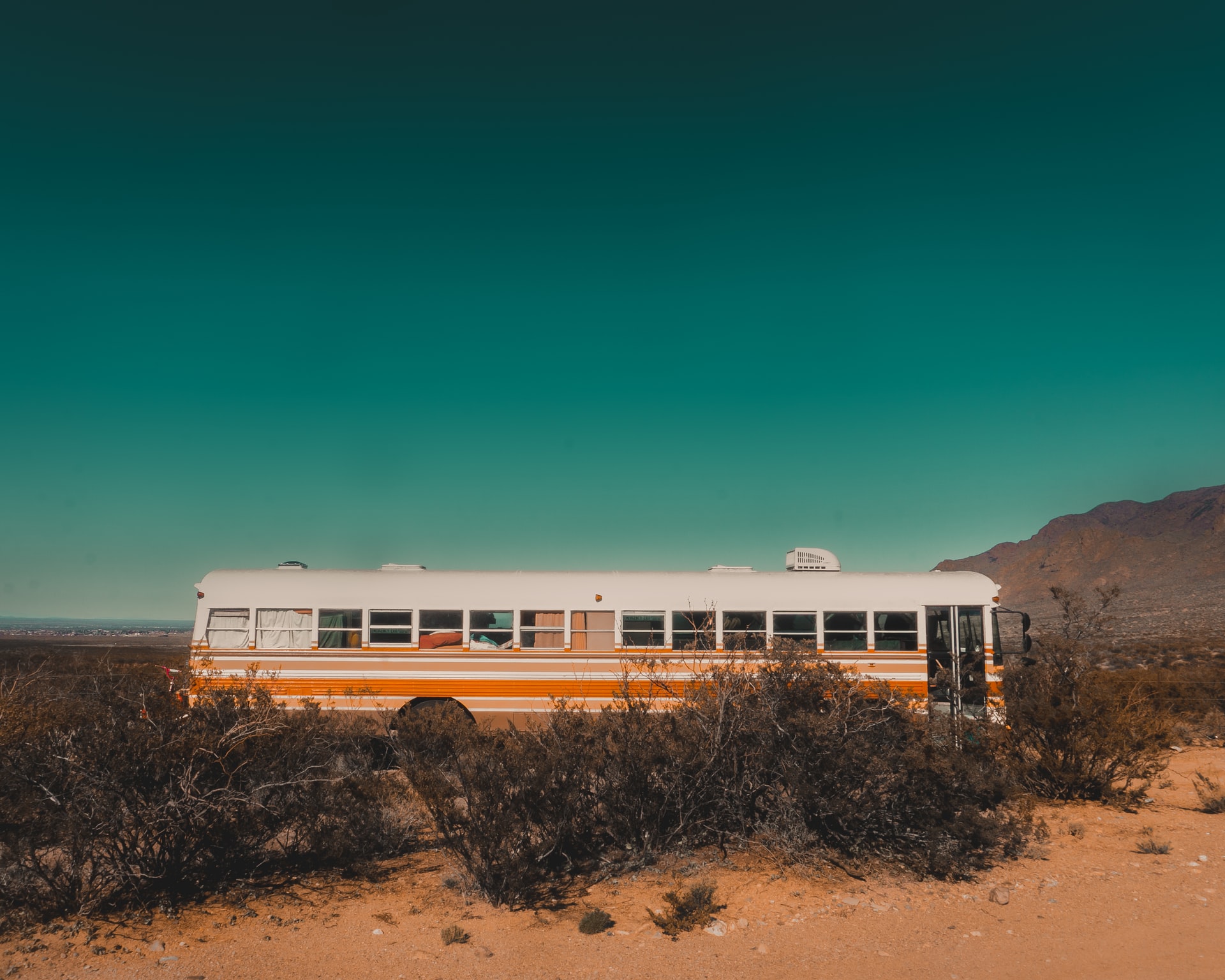You’re ready to go on an adventure, somewhere out in the woods or across states. Undoubtedly, your car isn’t the most suitable vehicle for this kind of journey. But a skoolie might be, or maybe an RV?
Whether it’s the ready-to-hit-the-road RV or the DIY skoolie project, there are some pros and cons in both options. And because there are differences between them, choosing which one to get might be a bit daunting.
No worries, though, because in this article, we’ll dive deep and examine the differences in sizes, customizability, storage space, prices, and, most importantly, safety.
An Overview
With skoolies, the sky’s the limit. You get to choose everything starting from the layout, where to put the wiring, which amenities to install, and all the way to the colors and lighting. RVs, on the other hand, come as they are, ready and fully loaded. So any upgrading would be a hassle and even problematic.
The differences between them don’t stop here, so we’ll look at several key categories to help us see which is a better fit.
A Side-by-Side Comparison
In each category, we’ll be looking at the pros and cons of both skoolies and RVs.
Size
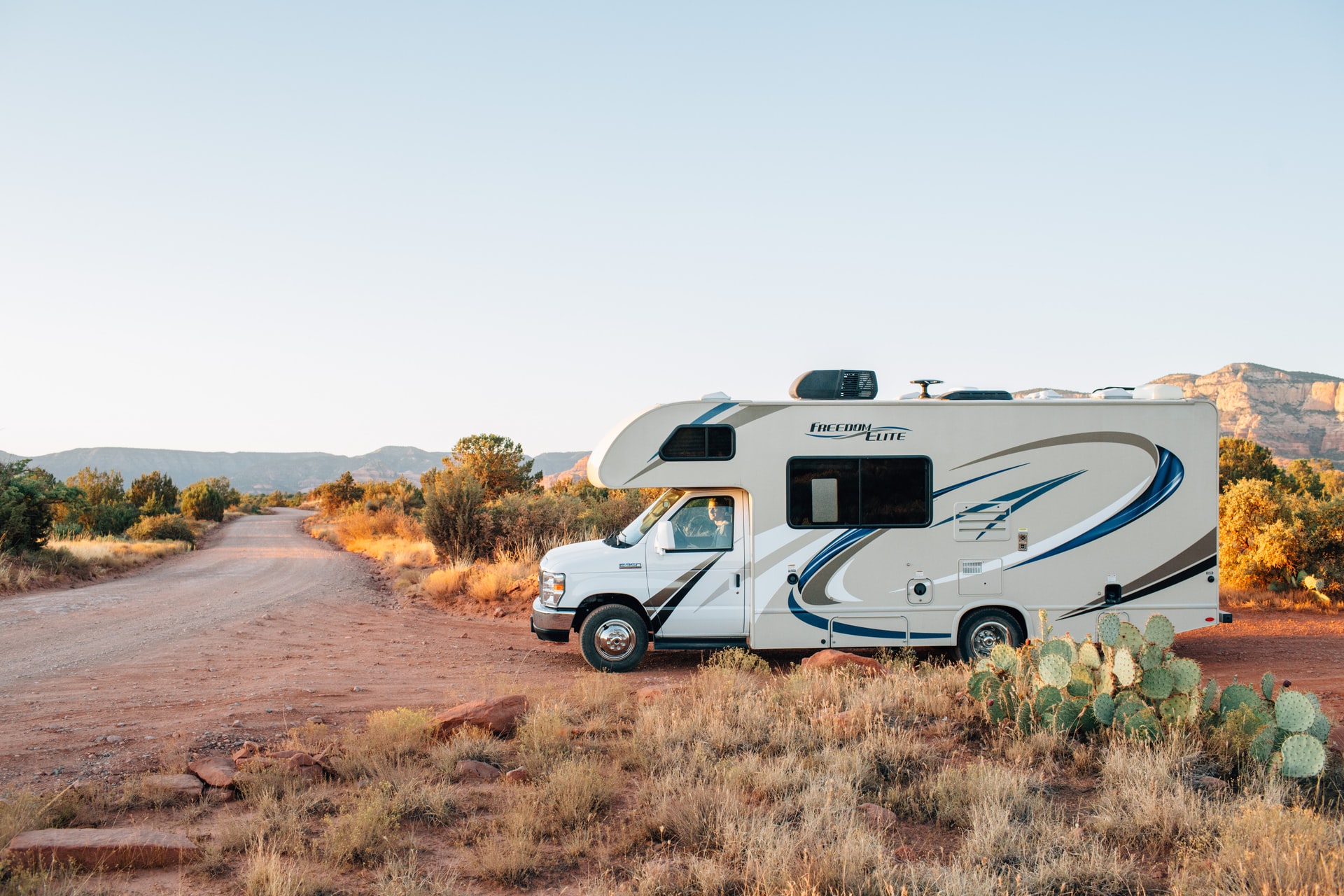
Skoolie
Skoolies are available in three sizes: short buses (20-25ft), mid-sized (25-35ft), and full-sized (35-42ft).
Short buses can park in most parking spots. They’re also spacious enough for 1 or 2 people. The downside of short buses is that you won’t be able to tow an additional car. Moreover, due to the limited size of these buses, you may have to forego some features, like separate bathrooms.
Mid-sized skoolies are big enough to accommodate most features available in full-sized buses, but they may be a bit cramped. However, if you’re not too worried about space, they can fit a family of 3 or 4 members. They’re also quite maneuverable and can be used for boondocking. One disadvantage, though, is that they’re a bit uncommon and quite expensive.
A full-sized skoolie has enough space for you to get creative. With that much space, full-sized skoolies can fit three or more people comfortably. Nevertheless, this spaciousness comes at the expense of parking spaces, so most people will tow a car to run errands. They’re also quite challenging to drive.
RV
RVs are available in three sizes as well: A, B, and C. It’s important to know that while class A is the largest, class B is the smallest, leaving class C right in the middle.
Class A RVs come with usable living space and many residential-style amenities, like refrigerators and washers. They offer so much luxury and space that they could fit up to 8 people. However, all of these perks come with a hefty price.
Class C is a more affordable option for campers looking to have the luxuries of class A. It’s the most flexible of the three classes because it’s large enough for a long trip but small enough for a short one. A downside of these RVs is that they can’t tow other vehicles.
Class B RVs offer basic necessities: cooking facilities, folding beds, and a small refrigerator. Some models even come with a toilet and a freshwater tank. A family of 4 can easily fit in a class B RV.
The Takeaway
Both skoolies and RVs come in a variety of sizes, with each size serving different purposes. While both don’t require a special license to drive, you’ll need some time to adapt to full-sized skoolies. You may also need an air brake certification.
Customizability
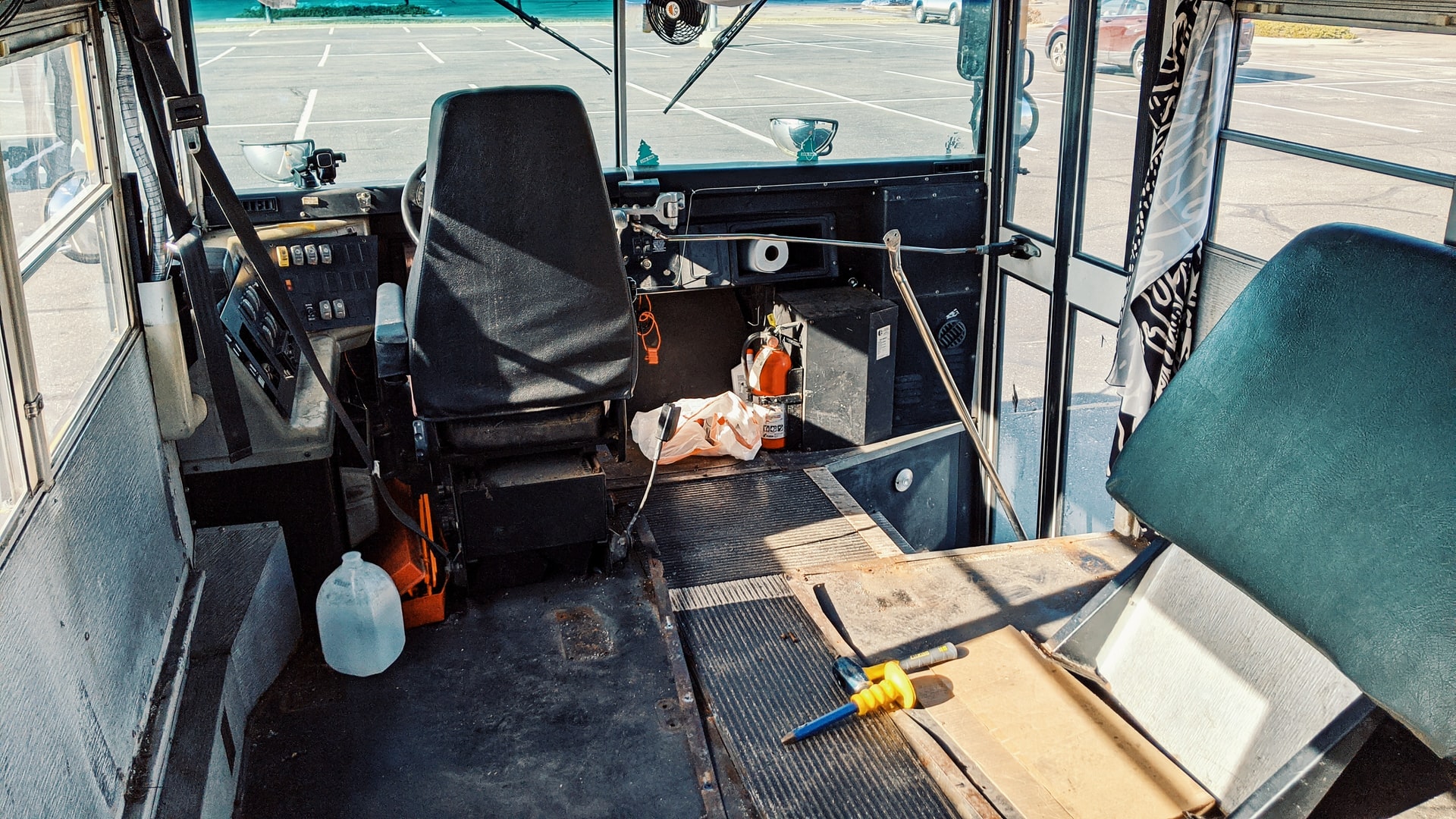
Skoolie
If you enjoy large DIY projects, a skoolie may be just what you need. Every choice regarding materials, colors, layout, appliances is yours. You get to build the skoolie according to your needs and wants—placing wires, insulation, and even natural light however you want.
Skoolies are a full-time project. You’ll be working with a basic structure, so they require a great deal of hard work and determination.
RV
RVs are much simpler than skoolies. They’re already furnished with all amenities and utilities built-in. What you see at the dealership is what you’ll get. They’re a great option if you want to move in and get on the road right away.
All brands build their RVs with standard parts, so if anything happens to break down, it’ll be easy to replace them. You’ll also be able to obtain help from the dealership if you face any issues.
The Takeaway
Although building a skoolie from scratch requires a lot of hard work, you’ll be able to divide the space however you like. You’ll also be familiar with the systems and wiring so that in case you’d like to renovate, you won’t face any problems.
Whereas with RVs, every single detail, down to the color of the furniture, is already decided. And any significant renovations would be complicated and time-consuming.
Prices
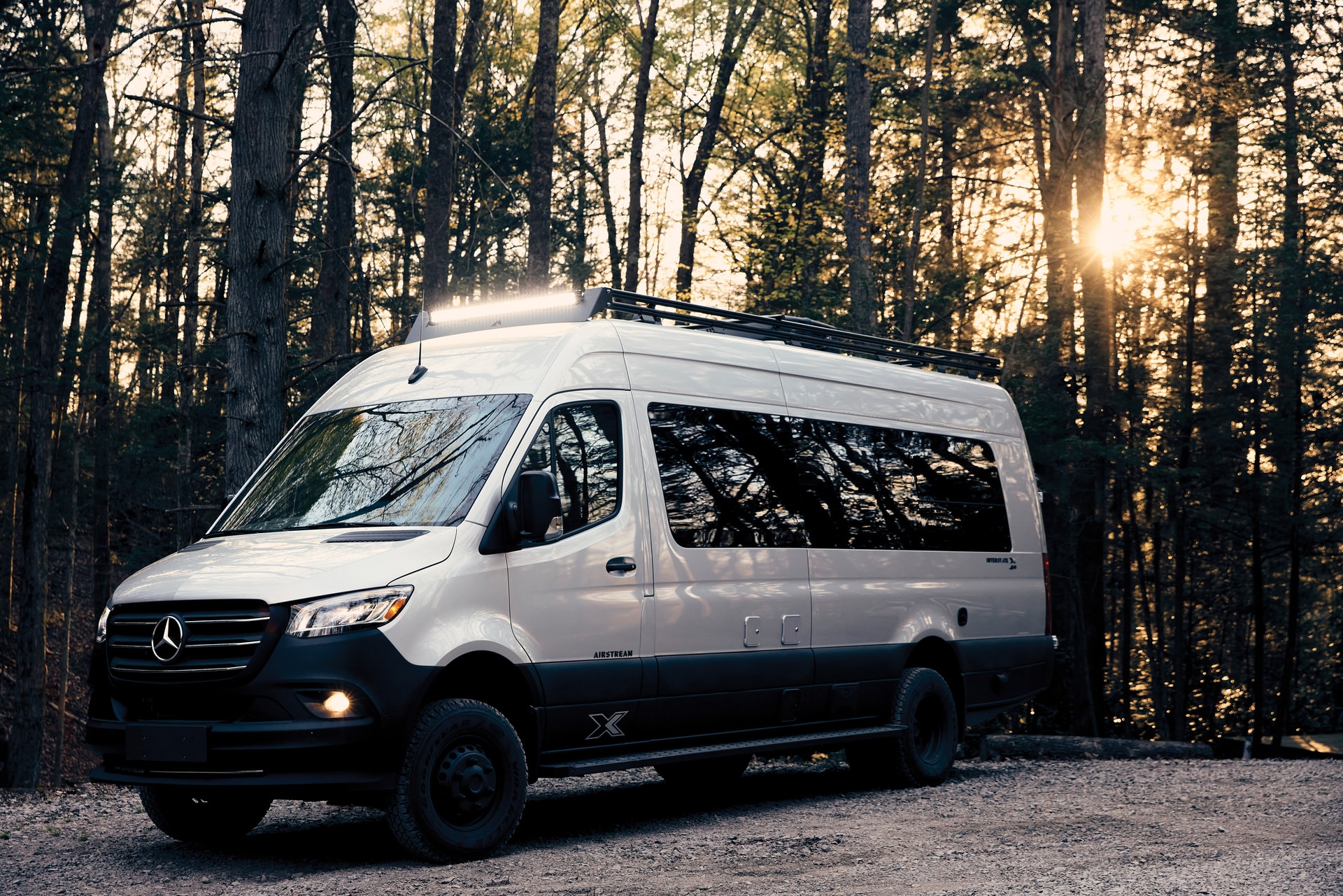
The Airstream Interstate 24X Luxury Class B Touring Coach
Skoolie
The prices of skoolies vary depending on their sizes, models, and engines. They still remain cheaper than a semi-good used RV. Even with the renovation, skoolies remain a cheaper option because once you install the important systems, you could install everything else over time.
RV
RVs are incredibly expensive, even used ones. Their prices could go up to the price of a house, which isn’t ideal for those looking to cut down on expenses by moving full-time into an RV.
The Takeaway
It seems that with skoolies, you may get a better bargain. A skoolie will only have what you want and need in it, and it won’t cost you as much as an RV of similar amenities.
Safety
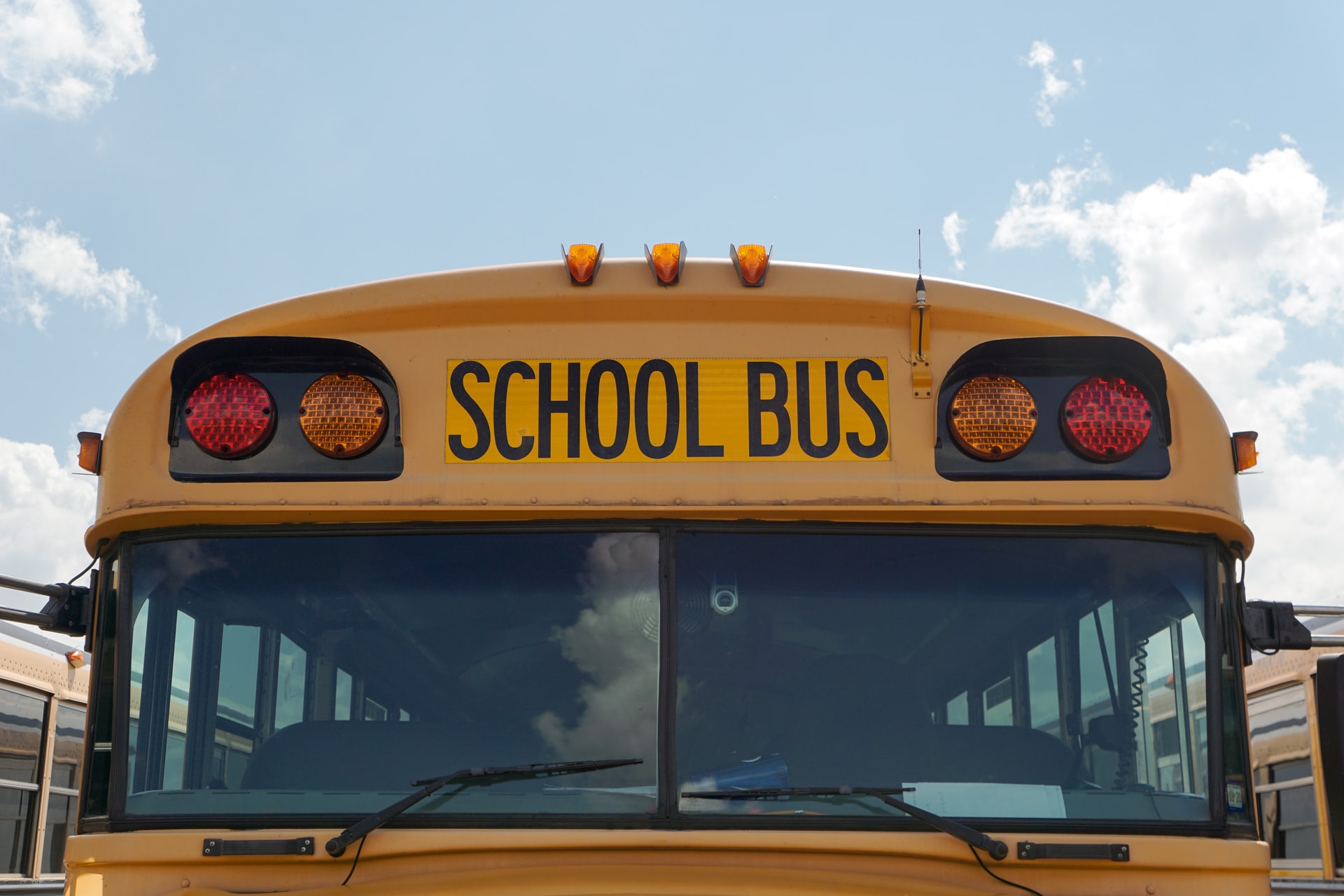
Skoolie
School buses are made with children’s safety in mind. Their walls are made out of two layers of galvanized steel and molded steel channels, and they’re designed as rolling cages with seats similar to airbags.
RV
In terms of safety, the three types of RVs are categorized into three ratings, with class A being the lowest and class B the highest.
Class A RVs have no airbags, and their front seats are close to the windshield. And while class C has airbags, the front and back of the RV are separated with only the front crash-tested.
The safest class out of the three, class B, undergoes the same safety measures as other vehicles. It has airbags and two seatbelts for the front seats.
The Takeaway
Skoolies are much safer than RVs because they’re designed with multiple safety features. Moreover, while skoolies are quite durable, RVs aren’t. Some RV owners complain that they face many issues with both the interior and exterior.
Conclusion
There are many aspects to consider when it comes to choosing a skoolie or an RV. Each comes with its perks, but they both have their drawbacks.
It boils down to which of them provides more benefits, and we believe those are skoolies. They’re safer and way cheaper. You get to choose how your skoolie looks and divide it as you please, thus making use of the entire vehicle without having to compromise an inch of space unnecessarily.

